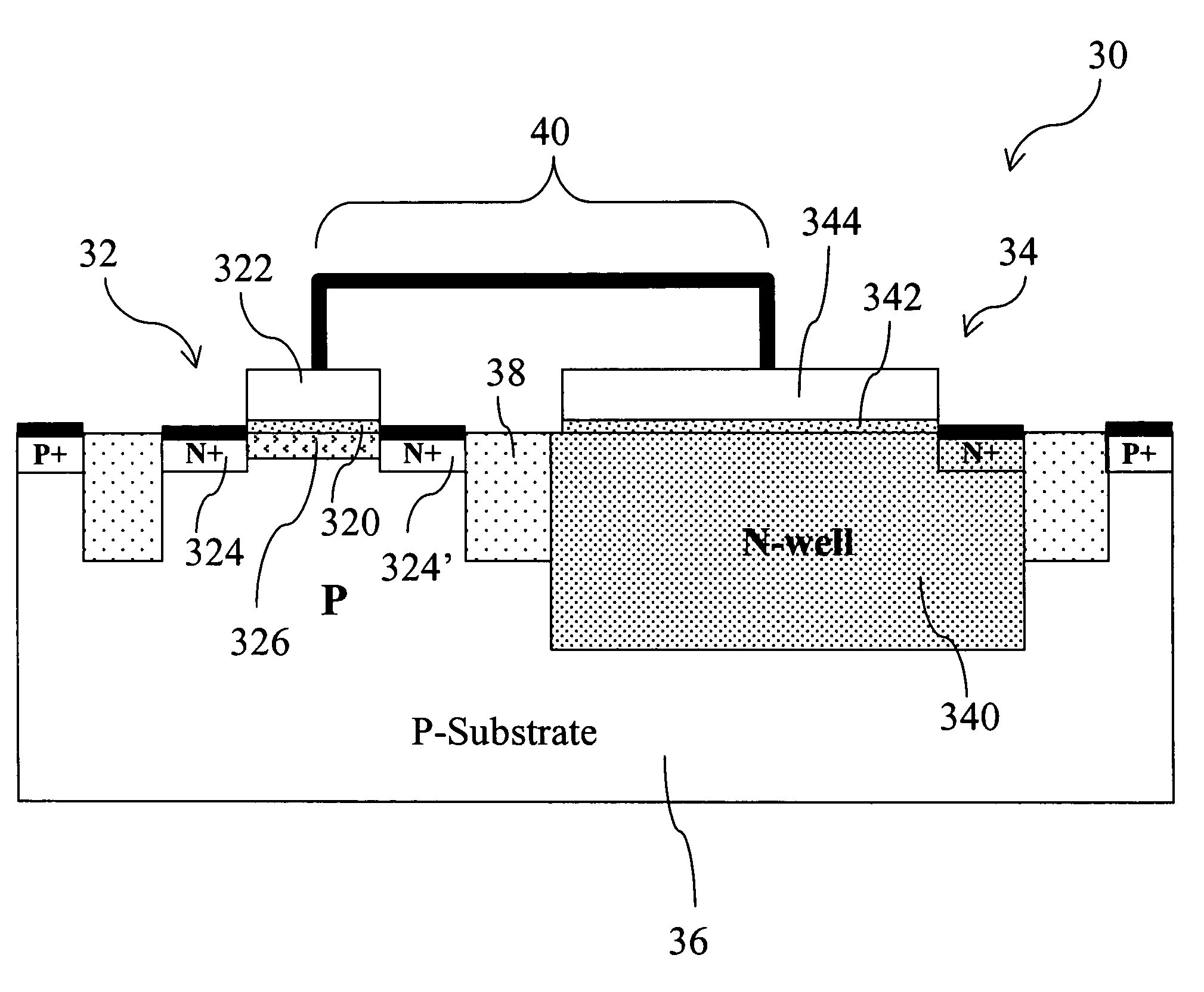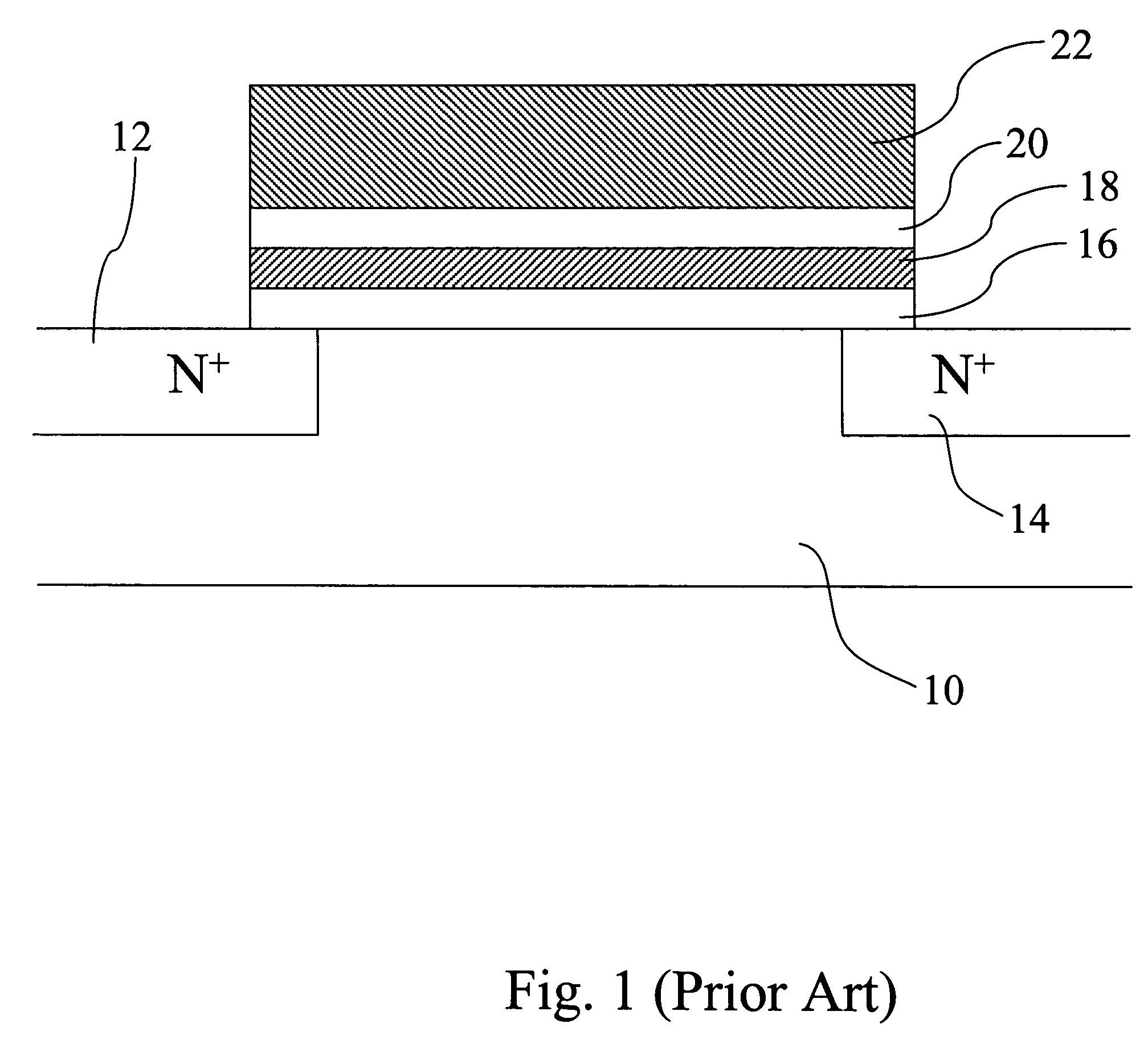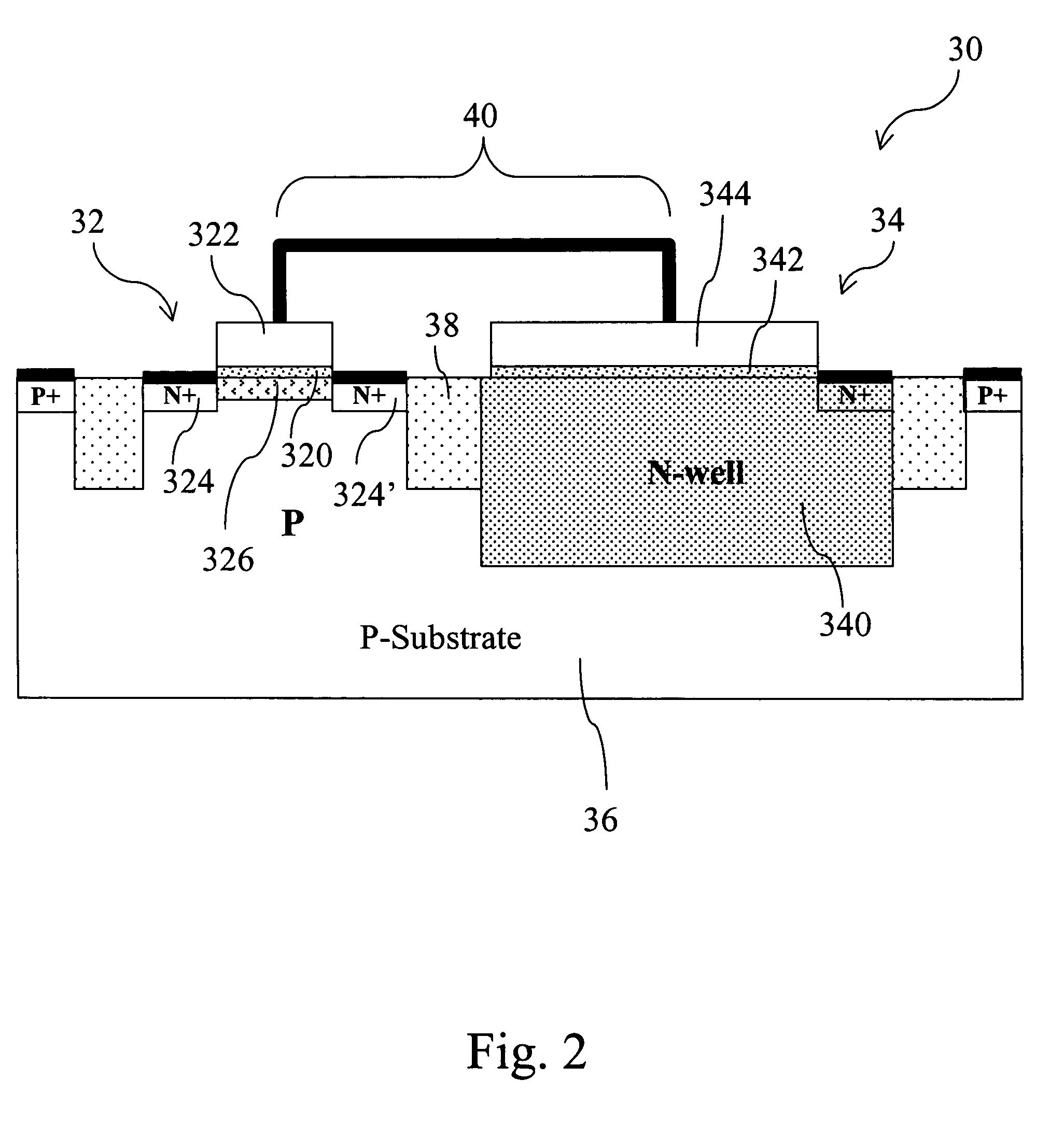Nonvolatile flash memory and method of operating the same
a nonvolatile memory and flash memory technology, applied in the direction of digital storage, semiconductor devices, instruments, etc., can solve the problems of increasing cost, reducing yield, reducing current requirements, etc., and achieve the effect of reducing current requirements and improving current flow efficiency
- Summary
- Abstract
- Description
- Claims
- Application Information
AI Technical Summary
Benefits of technology
Problems solved by technology
Method used
Image
Examples
Embodiment Construction
[0025]As shown in FIG. 2, a single-gate EEPROM memory cell 30 comprises an NMOS transistor (NMOSFET) 32 and an N-well capacitor 34 in a p-type silicon substrate 36. The NMOSFET 32 comprises a first dielectric 320 on the surface of the p-type silicon substrate 36, a first conducting gate 322 stacked above the first dielectric 320 and two n+ doped regions in the p-type silicon substrate 36 as a source 324 and a drain 324′. A channel 326 is formed between the source 324 and the drain 324′. The N-well capacitor 34 comprises a doped region in the p-type silicon substrate 36 (i.e., an N-well 340), a second dielectric 342 on the surface of the N-well 340, and a second conducting gate 344 stacked above the second dielectric 342 to form a sandwich capacitor structure of top plate-dielectric-bottom plate. The conducting gate 322 of the NMOSFET 32 and the conducting gate 344 of the N-well capacitor 34 are electrically connected together and isolated by an isolator 38 to form the structure of a...
PUM
 Login to View More
Login to View More Abstract
Description
Claims
Application Information
 Login to View More
Login to View More - R&D
- Intellectual Property
- Life Sciences
- Materials
- Tech Scout
- Unparalleled Data Quality
- Higher Quality Content
- 60% Fewer Hallucinations
Browse by: Latest US Patents, China's latest patents, Technical Efficacy Thesaurus, Application Domain, Technology Topic, Popular Technical Reports.
© 2025 PatSnap. All rights reserved.Legal|Privacy policy|Modern Slavery Act Transparency Statement|Sitemap|About US| Contact US: help@patsnap.com



